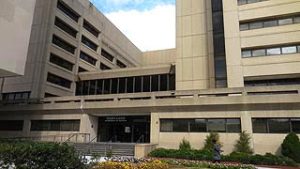The solution
Data Networks began the project with a careful assessment of the existing virtual environment to ensure the in-depth understanding necessary to design a new virtual server infrastructure. The review included: SAN and iSCSI network configurations, SAN disk layout and LUN configuration, and VMware ESX server configuration along with each virtual machine’s storage, networking, and virtual resource requirements.
With assessment data in hand, Data Networks engineers then designed a sound new infrastructure approach that included iSCSI switch fabric, SAN connectivity, disk layout, and ESX server configurations for each site. Planning also included the development of a migration services plan and schedule for migrating the data to a new EMC VNX5300.
The next phase of the project, SAN implementation, began with a site survey to verify data center rack space, power requirements, and electrical circuits along with network connectivity requirements at both sites. At the completion of this phase the Department had a functional new VNX5300 running Unisphere software and system integration between host servers and the new SAN.
Installation, configuration and integration to accomplish this included:
- Rack and Stack VNX5300 system
- Install and configure Unisphere software on VNX5300
- Test and verify DPE and drives are functional on VNX5300
- Connect VNX5300 to the iSCSI SAN fabric – test and verify functionality
- Rack and stack Dell PowerEdge R720s
- ZONE servers into iSCSI SAN fabric using EMC best practices
- Configure RAID groups and LUNs for host servers
- Install and configure SnapView software for local data protection
- Configure Storage Group for host servers
During the final phase the focus turned to implementation of VMware vSphere 5 which included:
- Install and configure vSphere 5.x software per server design specifications
- Patch software to current versions, per VMware “best practice” guidelines
- Install and configure vCenter software as a VM per VMware “best practice” guidelines
- Migrate data from existing AX4-5 to new VNX 5300 SAN per migration plan and schedule
- Test and verify successful data migration
- Test vCenter and ESX system configurations, network communications, and services functionality
To complete the implementation and ensure that the Department had the information they need to maintain their new virtual server infrastructure, Data Networks delivered all systems diagrams and configuration documentation along with basic knowledge transfer to the Department’s technical staff.
Mission accomplished
Upgrading this Health Department’s aging virtual server infrastructure provided them with reduced maintenance costs, more efficient use of data center and server resources, a simplified and consistent operating environment, and more effective management of enterprise IT resources — so they can continue to pursue their mission of being a valuable resource to the community in meeting public health needs.
“With this upgrade, the department now has a robust, flexible and reliable virtual server infrastructure to support their health services and business goals,” says Robert White, Data Networks Account Executive for the State of Maryland.







